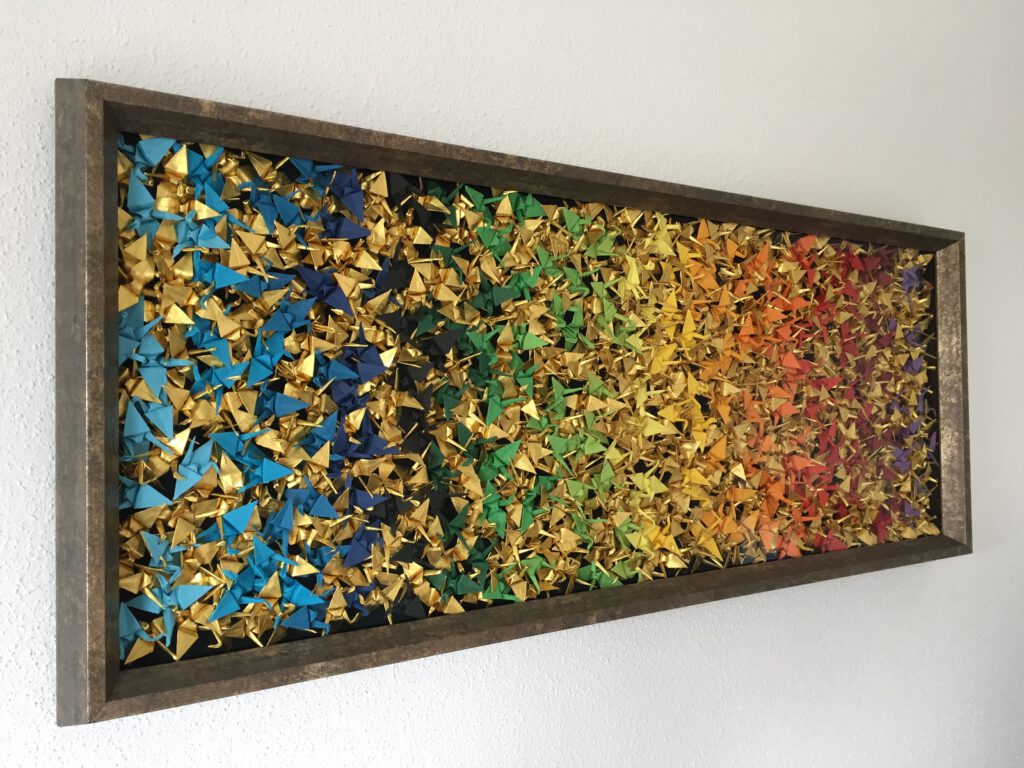The Process of Creating a Piece
Thousands become One
Not all the works are planned in advance. Some only take shape after the cranes have already been folded. But in each piece there is an enormous amount of work with long perseverance and a lot of attention to detail.
Sometimes it starts with a rough idea and sometimes it's just a single colour or a single paper. And even if the idea is clear from the start, it is often still a difficult process to find the right paper.
An important part of the process is always the corresponding colour studies. Because even if two colours express the right feeling on their own, together they can have a completely different effect - let alone in the combination of ten, twenty or more colours.
The colours of the background and accent colours such as gold must also be chosen carefully.
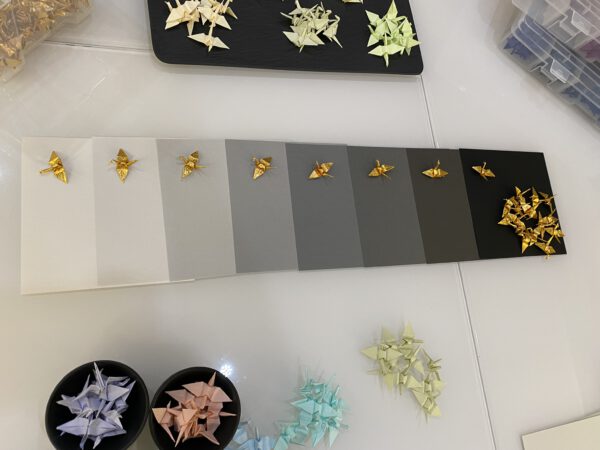
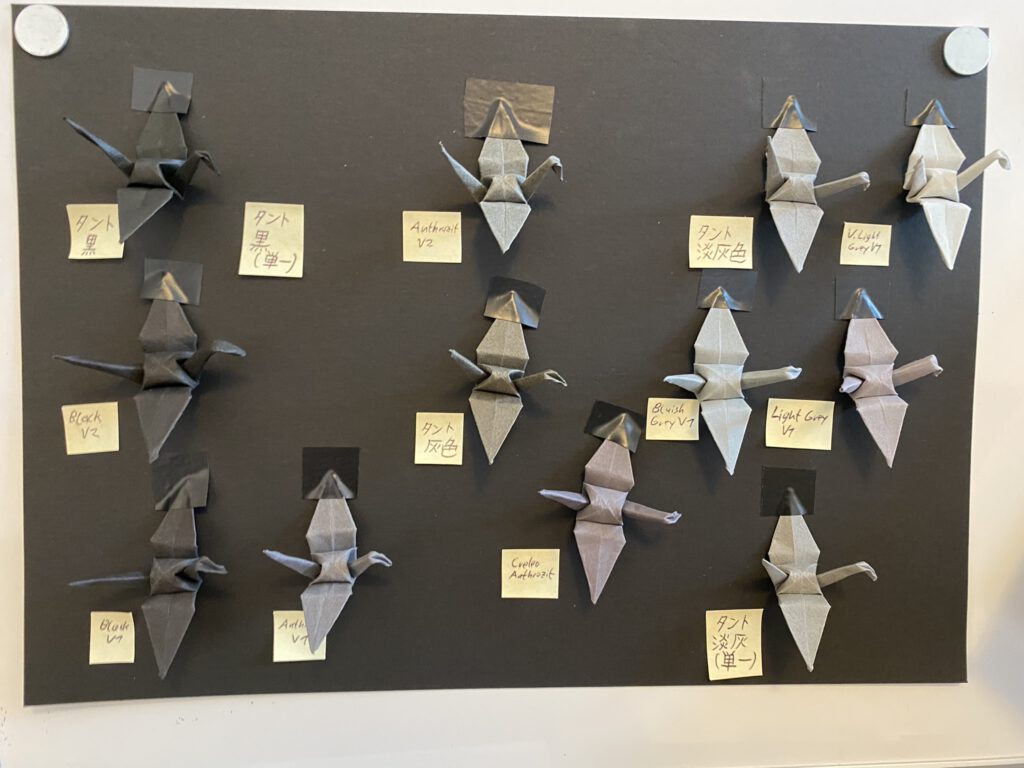
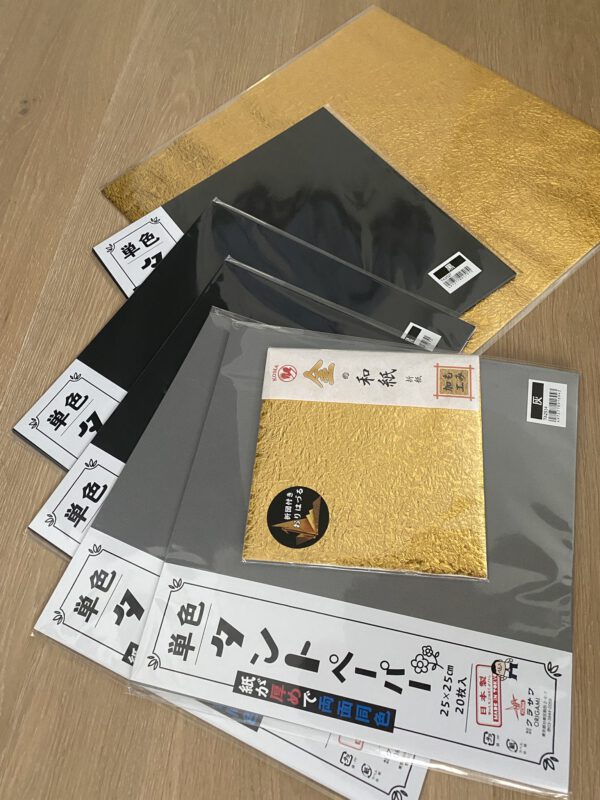
The Selection
In this regard the choice of the right paper is crucial. Besides color, other factors are also decisive for the overall impression:
- Die Härte eines Papieres bestimmt nicht nur die Falteigenschaften, sondern auch wie sich das Papier im Rahmen verhält und wie „starr“ die einzelnen Kraniche wirken.
- The structure of the paper significantly determines the light reflections of the piece - especially different gold and metallic tones behave very differently. Rough paper "swallows" the light, while many smooth papers are easier to fold but often reflect the light too strongly.
- The different weight of the paper ultimately determines the arrangement in the piece - each crane is set individually - but since the pieces are held in shape purely by the tension of the paper and do not require any glue, this factor is decisive in how the piece behaves after it is lifted up.
Many of these factors are difficult to deduce from pictures or descriptions, and since most paper comes directly from Japan, it is always a good or bad surprise to hold the first sheet of a new variety in your hands.
The Paper Cutting
Once the right papers have been found, the folding can't quite begin. High-quality paper in particular, which is still handmade in Japan today, usually comes in large sheets that first have to be cut to size.
This sounds easy at first, but it also turns out to be a long work step, considering that hundreds of individual, almost perfect squares have to be created from the sheets. If the paper is not cut evenly and precisely, the folded cranes will have displaced wings, strange necks or protruding folds.
The right size of the cranes also plays a role in the overall composition. Equal sizes make colours look stronger together, while differences in size emphasise the contrast between different colours and textures. Most cranes used are folded from paper between 3 and 6 cm in size.


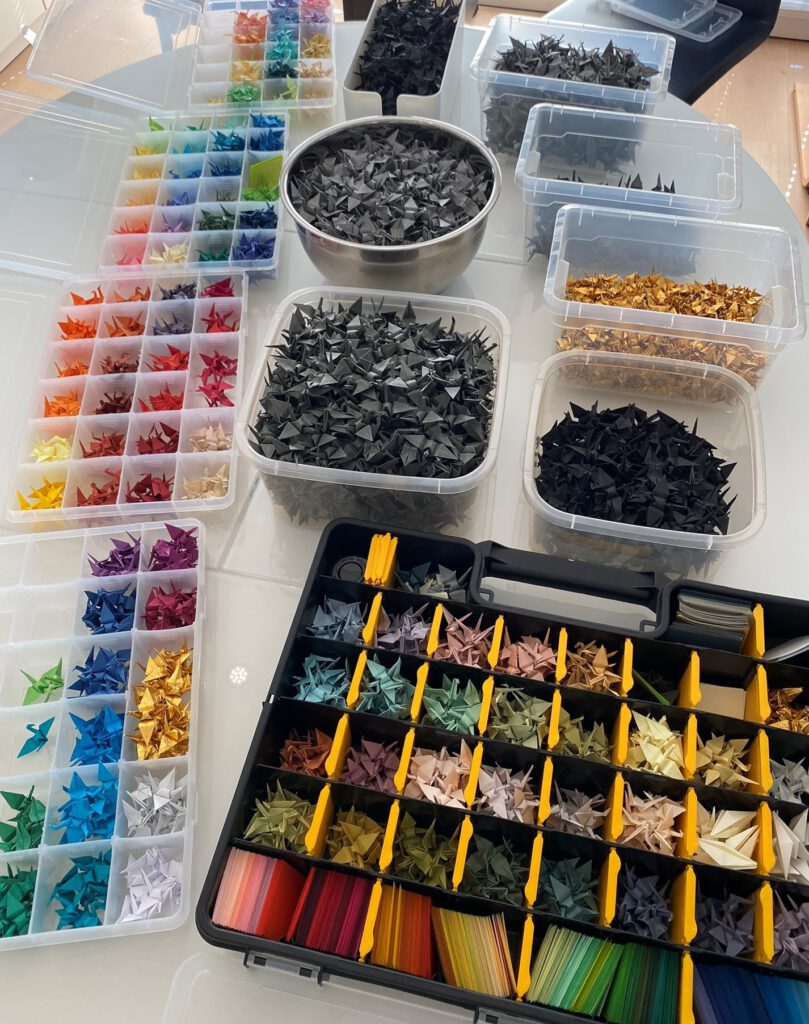
The Folding
Once the paper is cut into small squares, the process of folding can start. People often ask me how long it takes to fold a single crane.
The actual duration depends strongly on the properties of the paper, especially the folds of heavy, hard papers, which are used for imitating rocks, need special pressure and sometimes even small folding aids to protect the fingers when smoothing.
Overall, it takes between 100 and 300 seconds to fold a single crane. After thousands of folds, however, this has already been completely transferred into muscle memory.
So it is no wonder that it sometimes takes years to gather enough cranes for a single piece. For one of the first pieces with over 3000 cranes, it actually took 3 years.
By the way, the storage and sorting of the cranes presents its own challenges.
The Choice of Frame
Only with the right frame the cranes really are shown to their full advantage and express the intention of the piece correctly. Once again, you have to choose from hundreds of different possibilities. Each frame used is a customized single piece, precisely matched to the composition in all its characteristics.
The thickness and glass of the frame are also crucial: if there is more space between the glass and the back wall, the cranes either need to be larger, harder or simply more to hold the composition in place.
Exclusively gallery glass of the highest quality is used - UV protection is particularly important. Because no matter how high the quality of the paper is, sunlight changes even the strongest colours.
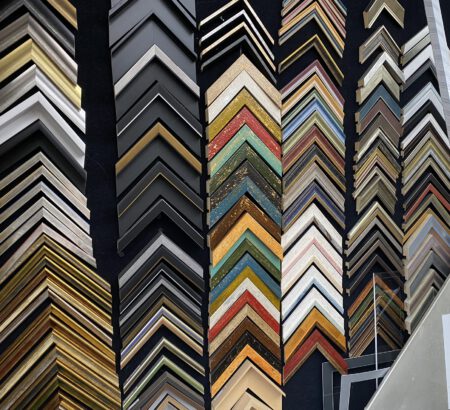

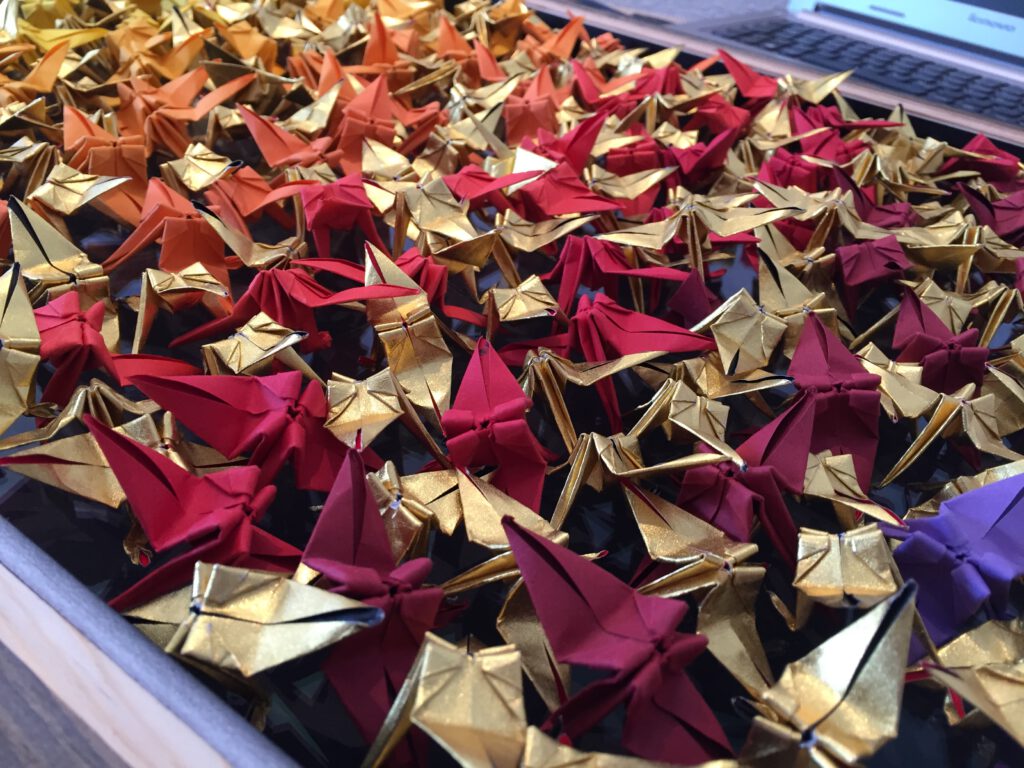
Positioning and Composing
Once the frame is built, you can start: After the actual folding, arranging is the second most time-consuming step.
Not only must each individual crane be perfectly positioned, but the overall composition must also be constantly monitored. Similar to an artist who creates a picture from a thousand strokes, each crane must be chosen carefully and positioned skillfully. geschickt positioniert werden.
This is still small folded paper - too much pressure can shift a whole area - but too little pressure causes the cranes to redistribute after the frame is closed, destroying the whole composition.
Another underestimated factor is that ideally only the front of the cranes should be visible in order to create an even play of colours. However, as the individual cranes like to turn or cover each other with their wings, necks and tails when they are set, this quickly becomes a game of patience that requires a great deal of dexterity.
Composing larger pieces can take several days.
The Final Piece
After all the work, the last step is to seal the frame.
The first lifting from the horizontal to the vertical is particularly exciting. If the cranes are not placed well enough at any point, if there are too few in one place or if the paper is too soft, the whole composition can slip and the positioning has to start all over again.
Since the piece was lying on the glass side the whole time, it is also difficult if not impossible to check the composition during the positioning process. It is surprising how different the front view and the back view appear, due to the orientation of the cranes.
Therefore, this moment is always very special when the piece is seen in its full glory for the first time after hundreds of hours of work.
